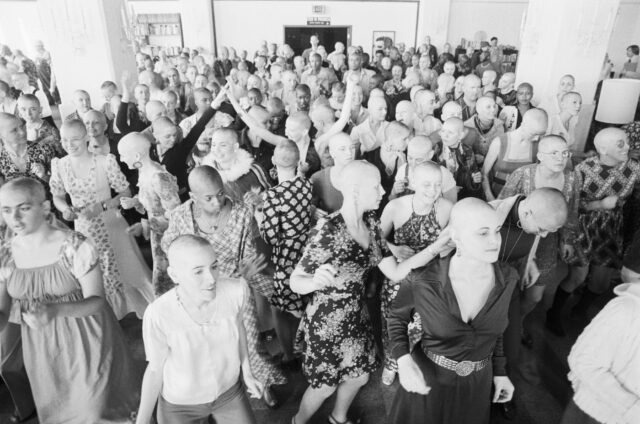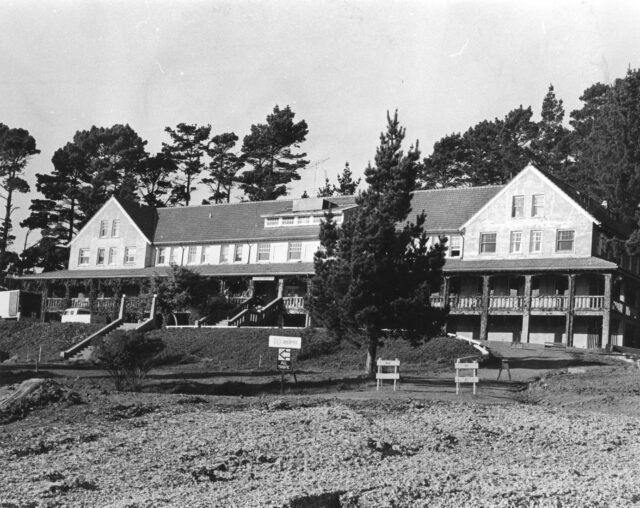The story of Synanon is both captivating and complex. Once a pioneering community for substance abuse recovery, Synanon evolved into a controversial and, ultimately, destructive cult. Through a deep dive into the Synanon saga, things like the human quest for belonging, the dangers of unchecked power, and the thin line between utopia and dystopia are clearly detailed.
Synanon was a beacon of hope for many seeking recovery

Synanon’s journey began in the late 1950s in the bustling city of Santa Monica, California. Founded by Charles E. Dederich Sr., a charismatic leader with a vision, it initially emerged as a groundbreaking drug rehabilitation program. Unlike the clinical approaches of the time, Synanon offered a new, community-based path to recovery. Residents, referred to as “students,” lived together, sharing experiences and supporting one another through a process called the “Synanon Game.” This innovative method encouraged open, often confrontational, feedback sessions aimed at personal growth and overcoming addiction.
The success stories from Synanon were nothing short of miraculous in the early days. People from all walks of life, desperate for a solution to their addictions, found solace and strength within its community. The sense of belonging, combined with the unique approach to recovery, made Synanon a beacon of hope. Its rapid growth and the expansion of its facilities across California were testaments to its initial positive impact.
It transformed from a healing community to an authoritarian cult

However, the very factors that contributed to Synanon’s early success also sowed the seeds of its downfall. The community’s insular nature began to breed a dangerous conformity. Charles E. Dederich’s influence morphed from inspirational to dictatorial. The Synanon Game, once a tool for personal liberation, became a means of public humiliation and control. Synanon declared itself a religion in the early 1970s, a move that not only provided tax exemptions but also signaled the beginning of its transformation into a cult.
This period marked a significant shift in Synanon’s identity and objectives. The focus on rehabilitation was gradually overshadowed by a quest for power and control. The community enforced strict rules, demanded absolute loyalty, and practiced aggressive fundraising tactics. Members were encouraged to cut ties with the outside world, and dissent was met with severe punishment. Synanon’s utopian vision had darkened, turning it into a closed, authoritarian society.
Intimidation, violence, and the snake incident

As Synanon grew more militant, reports of intimidation and violence against perceived enemies began to surface. The organization developed its own security force, known as the “Imperial Marines,” tasked with protecting Synanon’s interests and dealing with detractors. The most notorious episode of violence was the “Snake Incident” in 1978, where a rattlesnake was placed in the mailbox of a lawyer who had filed a lawsuit against Synanon. The lawyer was bitten but survived the assassination attempt. This event marked a turning point, drawing federal attention and public outrage towards Synanon’s activities.
The incident epitomized the lengths to which Synanon would go to silence its critics and maintain control over its members. It showcased how far the organization had strayed from its original mission of healing and support. The public and authorities could no longer ignore the dangerous turn Synanon had taken.
Legal battles and the decline of Synanon

The Snake Incident was the catalyst for a series of legal challenges that would ultimately lead to Synanon’s demise. Investigations revealed financial irregularities, illegal activities, and the mistreatment of members. The cult’s tax-exempt status was revoked, and it faced numerous lawsuits from former members and external parties. The legal pressure, combined with growing public scrutiny, began to erode the foundation of Synanon’s power.
By the late 1980s, Synanon was a shadow of its former self. Its membership had dwindled, its finances were in disarray, and its reputation was irreparably damaged. In 1991, Synanon officially dissolved, ending a chapter in American history that had started with such promise but ended in tragedy and disillusionment.
Its story still offers lessons

While Synanon ultimately transformed into a dangerous institution, its story serves as a cautionary tale about the dangers of charismatic leadership, the potential for abuse in closed communities, and the fine line between idealism and fanaticism. It also highlights the complexity of human nature and the challenges of addressing addiction and recovery. Despite its eventual descent into authoritarianism and violence, Synanon’s early years contributed to the evolution of addiction treatment methods and the concept of therapeutic communities.
Today, the lessons learned from the rise and fall of Synanon inform the practices of modern rehabilitation programs. These programs strive to balance community support with individual autonomy, and they operate with transparency and accountability to prevent the abuses of the past. The legacy of Synanon is a reminder of the need for vigilance in the pursuit of healing and the importance of safeguarding the rights and dignity of those seeking help.
More from us: Human Skulls Found in Cave Near Jerusalem Were Likely Used in Roman Necromancy Cult
In the end, the story of Synanon is not just about the rise and fall of an organization; it’s about the resilience of the human spirit and the ongoing struggle to find a balance between community and individuality, between control and freedom.
HBO has released a four-part mini-series on the history of Synanon.
